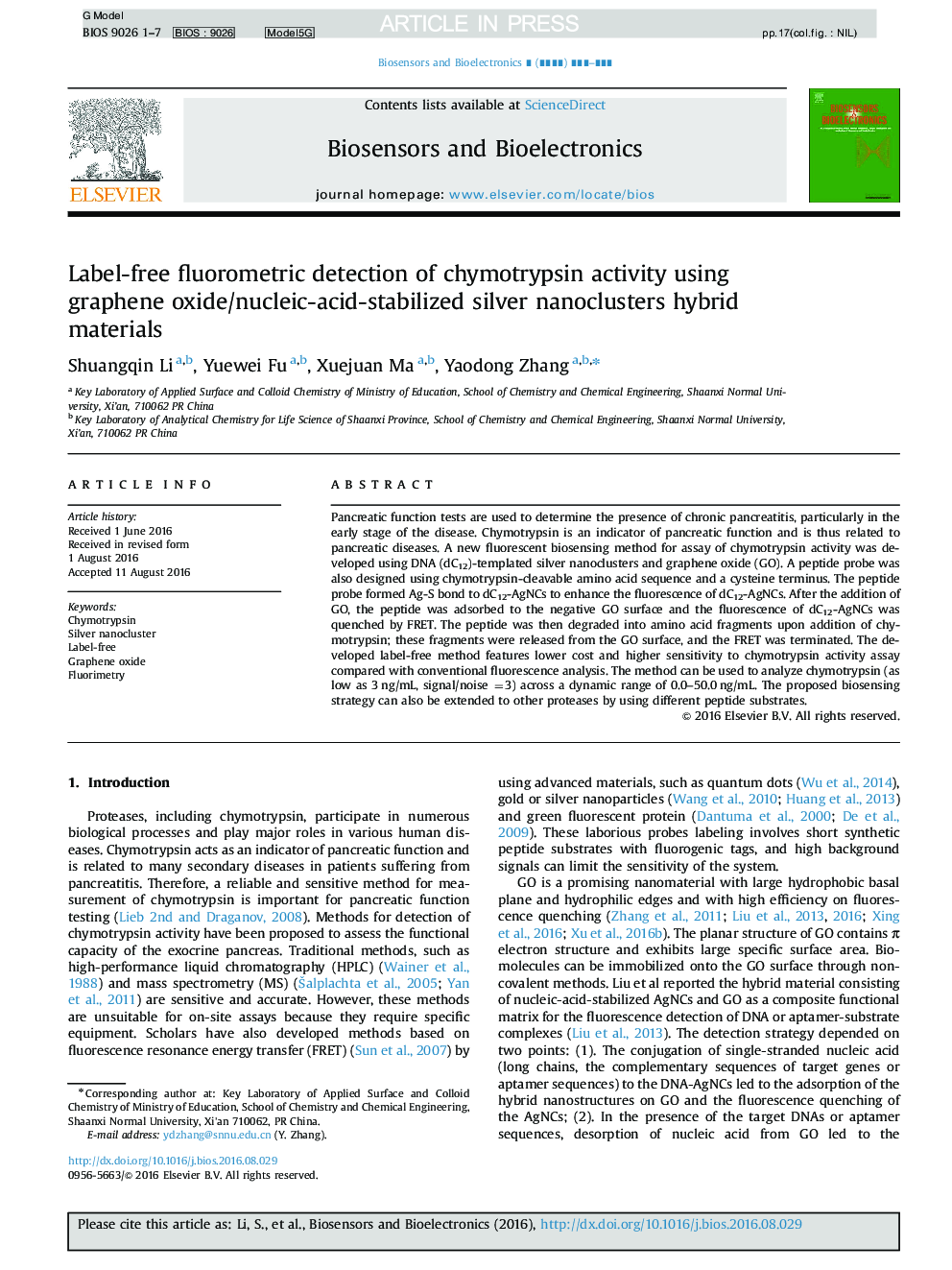| Article ID | Journal | Published Year | Pages | File Type |
|---|---|---|---|---|
| 5031416 | Biosensors and Bioelectronics | 2017 | 7 Pages |
Abstract
Pancreatic function tests are used to determine the presence of chronic pancreatitis, particularly in the early stage of the disease. Chymotrypsin is an indicator of pancreatic function and is thus related to pancreatic diseases. A new fluorescent biosensing method for assay of chymotrypsin activity was developed using DNA (dC12)-templated silver nanoclusters and graphene oxide (GO). A peptide probe was also designed using chymotrypsin-cleavable amino acid sequence and a cysteine terminus. The peptide probe formed Ag-S bond to dC12-AgNCs to enhance the fluorescence of dC12-AgNCs. After the addition of GO, the peptide was adsorbed to the negative GO surface and the fluorescence of dC12-AgNCs was quenched by FRET. The peptide was then degraded into amino acid fragments upon addition of chymotrypsin; these fragments were released from the GO surface, and the FRET was terminated. The developed label-free method features lower cost and higher sensitivity to chymotrypsin activity assay compared with conventional fluorescence analysis. The method can be used to analyze chymotrypsin (as low as 3Â ng/mL, signal/noise =3) across a dynamic range of 0.0-50.0Â ng/mL. The proposed biosensing strategy can also be extended to other proteases by using different peptide substrates.
Related Topics
Physical Sciences and Engineering
Chemistry
Analytical Chemistry
Authors
Shuangqin Li, Yuewei Fu, Xuejuan Ma, Yaodong Zhang,
